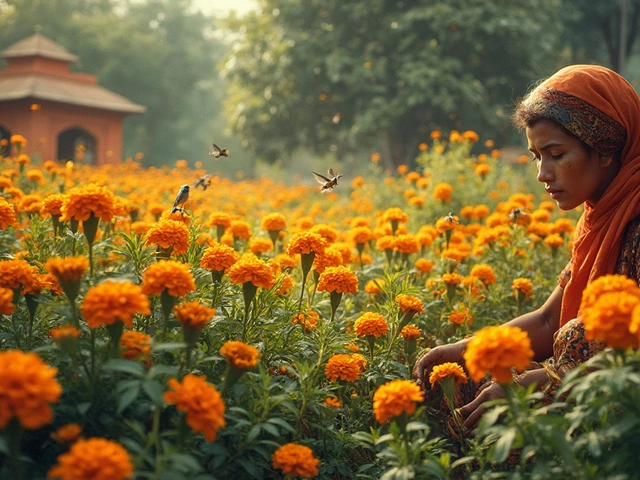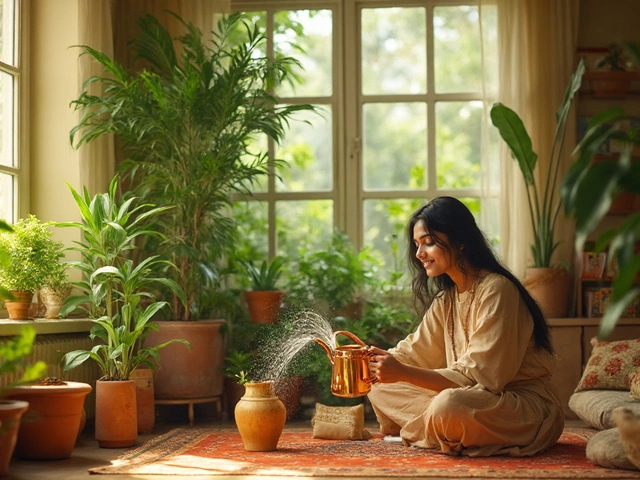Potatoes in India: Growing Tips, Top Varieties & Easy Uses
Potatoes are a staple in many Indian kitchens, but most people think they’re only for big farms. The truth is you can grow a good crop right in your backyard or balcony with a few simple tricks. Whether you want fresh mash for dinner or a new cash crop, the right variety and care make all the difference.
Top Potato Varieties for Indian Gardens
India’s climate varies from cool hills to hot plains, so pick a variety that fits your region. In the North, Russet Burbank and Kufri Jyoti handle cooler nights and give big, fluffy tubers. In warmer states like Maharashtra and Karnataka, Kufri Pukhraj and Desiree tolerate heat and still produce a decent yield. If you have limited space, look for dwarf types such as Irish Cobbler that stay compact but still give a solid harvest.
Step‑by‑Step Guide to Growing Potatoes
First, get certified seed potatoes from a reliable source – never use grocery store potatoes because they may carry disease. Cut them into pieces, each with at least one eye, and let the cuts dry for a day to avoid rotting.
Choose a sunny spot with loose, well‑draining soil. Loosen the top 12‑15 cm and mix in some compost or well‑rotted manure. Plant the seed pieces 10 cm deep, spacing them 30 cm apart in rows that are 75 cm apart. Cover with soil and mound a little extra earth around each plant as they grow – this “earthing up” protects the tubers from sunlight and encourages more potatoes.
Water consistently, aiming for about 2.5 cm per week. In hot weather, drip irrigation works best because it delivers water directly to the root zone without wasting it. Avoid over‑watering; soggy soil can cause rot.
Watch out for pests like the potato tuber moth and aphids. A simple spray of neem oil or planting companion crops such as marigold can keep them in check without chemicals. If you notice any green spots on tubers, remove them immediately – those spots become toxic when cooked.
Harvest usually comes 90‑120 days after planting, depending on the variety. When the foliage starts to yellow and die back, gently dig around the plant and lift the tubers. Handle them carefully to avoid bruises, which reduce storage life.
After cleaning, let the potatoes cure in a dark, well‑ventilated area for a week. This toughens the skin and extends shelf life. Store them in a cool (8‑10 °C), dark place with good airflow. Avoid refrigeration, as it turns the starches into sugar and changes the taste.
Cooking is the fun part. Boil, mash, fry, or toss them into a spicy aloo sabzi. If you have extra, try making potato cutlets or even a simple aloo paratha for a quick snack. The fresh flavor of home‑grown potatoes beats store‑bought any day.
With the right variety, soil preparation, and a bit of care, growing potatoes in India is easier than you think. Start small, learn from each season, and soon you’ll have a reliable supply of tasty tubers right at your doorstep.
Are Potatoes Native to India? Discover the Truth
Discover the historical journey of potatoes, from their origins in South America to becoming a staple in Indian cuisine and cultivation. Learn if potatoes are truly native to India and explore their role in Indian vegetable gardening. Uncover surprising facts about how potatoes made their way into Indian fields and kitchens, along with practical tips for growing them successfully in your garden.
About
Vegetable Gardening
Latest Posts


What Flower Will Bloom All Summer Long? Top Picks for Hot Indian Months
By Alden Thorne May 18, 2025

Broccoli Farming in India: Profit Secrets, Tips, and Market Dynamics
By Alden Thorne Aug 7, 2025

Discover India's All-Season Wonder: The Marigold
By Alden Thorne Mar 23, 2025

